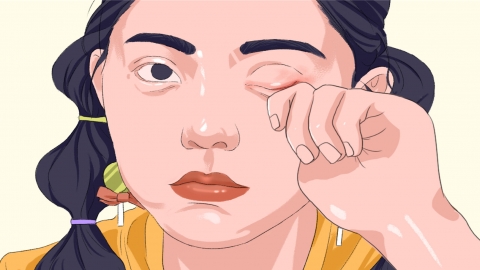What is the simplest method to recover from floaters?
Generally speaking, there is no such thing as the "simplest method to recover from floaters." Treatment options for floaters mainly include observation and follow-up, lifestyle adjustments, medication, laser therapy, and vitrectomy. If symptoms persist or worsen, it is recommended to seek timely evaluation at the ophthalmology department of a reputable hospital. Specific analyses are as follows:
1. Observation and Follow-up
For physiological floaters that are stable and do not affect vision, no special treatment is required. Regular eye exams to monitor the retina and vitreous condition are sufficient. Typically, a check-up every six months to one year is advised to track any changes in the condition and prevent delays in addressing potential eye problems due to neglect.
2. Lifestyle Adjustments
Avoid prolonged close-up work; take a 5–10 minute break every 40 minutes of visual tasks. Reduce exposure to intense light by wearing UV-protective sunglasses outdoors. Ensure adequate sleep and avoid staying up late. Additionally, consume foods rich in vitamins A and C—such as carrots and oranges—to support eye health.

3. Medication
For floaters caused by vitreous opacities, medications such as amiodarone peptide eye drops, polyene iodine complex tablets, or Fuming tablets may be used under medical supervision. These drugs help promote vitreous metabolism and improve ocular microcirculation, thereby alleviating floater symptoms.
4. Laser Therapy
Nd:YAG laser vitreolysis uses laser energy to break up vitreous opacities, facilitating their dispersion and absorption, thus reducing the number of floaters. This minimally invasive procedure offers quick recovery and is suitable for patients who do not respond well to medication. Post-treatment, adequate eye rest is essential.
5. Vitrectomy
When floaters are associated with serious complications such as vitreoretinal traction or retinal tears, vitrectomy may be necessary. This surgery involves removing the cloudy vitreous and repairing the retina. After surgery, patients should follow medical advice to use medications such as levofloxacin eye drops, tobramycin-dexamethasone ointment, and pranoprofen eye drops to prevent infection and promote wound healing.
In addition, during treatment, patients must strictly adhere to medical instructions and should not adjust or discontinue medication on their own. If sudden vision loss or an increase in dark spots occurs, immediate medical attention is required to adjust the treatment plan.




